Chairs, chairs...
Having an authentic chair from a WWII aircraft in your radio shack is always a
treat, if not the most comfortable thing you can sit on. The incredible variety makes it virtually
impossible to be "wrong" for whatever aircraft radio suite you might have, though some of the chairs
fetch high prices because of their rarity. Shown below are two different types
from a B-29. Both are simply "secretarial chairs" from the late 1930s that were adapted to be bolted into an airframe.
The pilot and copilot had much more luxurious chairs, sorta like thrones for the mighty, but the rest of the crew used variations of these shown below,
though the bombardier had a special seat made to fit between all the instrument panels in front.
Some of the extra crewmen for special ops had only a pad on the floor to sit on (with safety belt bosses bolted to the floor for others to trip
on when not needed), so I guess a secretarial chair was better than that for a 16 hour mission. (Except for the fact that the seat was made for very small derrieres
by today's standards. It is only 14.25" wide by 13.25" deep by 1.5" thick, with horse hair cushioning material.)
One chair is from the first production B-29 series that was not adjustable for leg room, and has a strange looking plate across the back legs that
holds a flight suit heater control but looks like one of those book shaped reflectors that you hold in your hands to catch the weak rays of a winter
sun in an attempt to get a tan. The top corners also look like a good way to get a nasty cut if your calf is in the wrong place at the wrong time.
Oh, and this thought occurred to me - without any adjustment for leg length, early B-29 crewmen all must have had to be something like 5' 5" tall.
I can imagine a sign at the enlistment center with a line on it at that height and the caption, "You must be shorter than this tall to ride on a B-29.
Pilots and Copilots excluded."
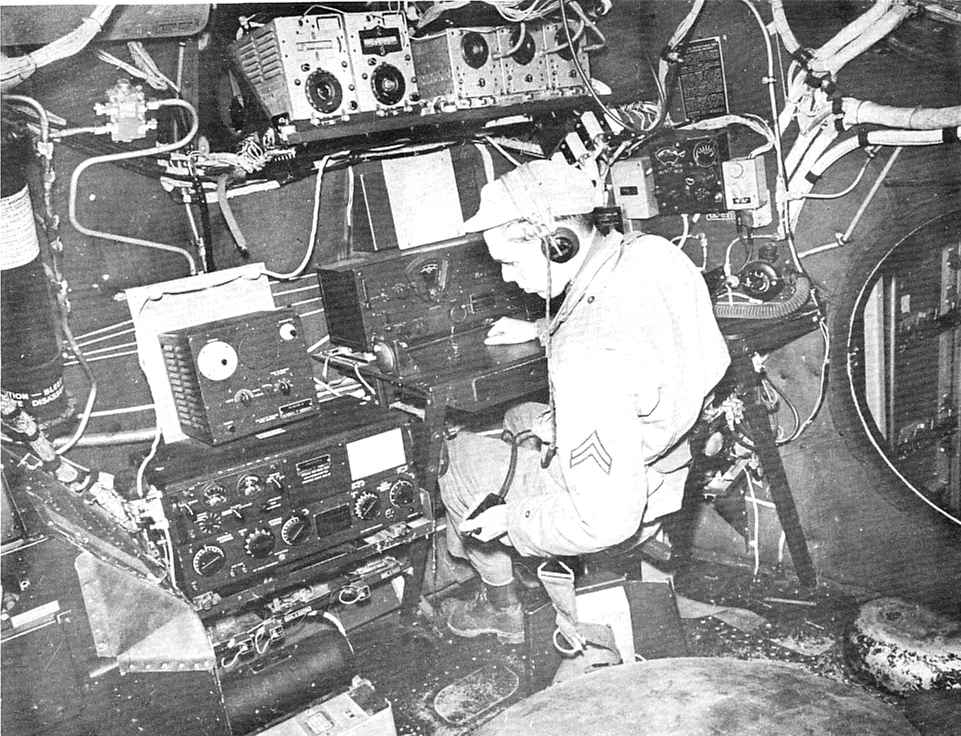
Early B-29 Radio Operator's chair period photograph. Note the "facial tanning reflector" on the back of the chair.
The white object behind the hanging seat belt is the flight suit heater control box,
later moved to the right side of the operators' work table. This usually black wrinkle finished box was painted in a
light gray color to help locating it in a darkened aircraft. In this pressurized aircraft, it wasn't normally needed, but you never know...

Early B-29 Radio Operator's chair tripod, with later adjustable type with rails in the rear.
The second chair base below is from a later B-29, and was used in several positions because of
its adjustment capability. The mounting rails were made in two different lengths for the
actual aircraft installation. These particular rails had to be milled from aluminum
bar stock to the required "T" cross section, since the original rails were usually
melted down with the aircraft and have almost vanished from existance.

Late B-29 Flight Crew chair tripod with short rails for athwartships positions (e.g., radio operator, etc.)
The rails below are the length that will span two positions on the "flight deck", and are identical to the set designed for the Navigator's station
in the B-29. He had two sets of instruments to deal with, so this arrangement allowed him to scoot back and forth between the two. Releasing the two Dzus
fasteners (also made from scratch out of stainless steel because they were no longer produced
in this specific configuration) allows swinging the whole assembly upward to clean the deck underneath.
The yellow paint on the knobs is specified in 1945 Boeing drawings for the "Silverplate" atomic weapons
aircraft, but I have also seen red, black, and siver paint on these knobs in other B-29 aircraft.
The intent of the bright colors was to be able to see them more easily in a darkened aircraft if needed.
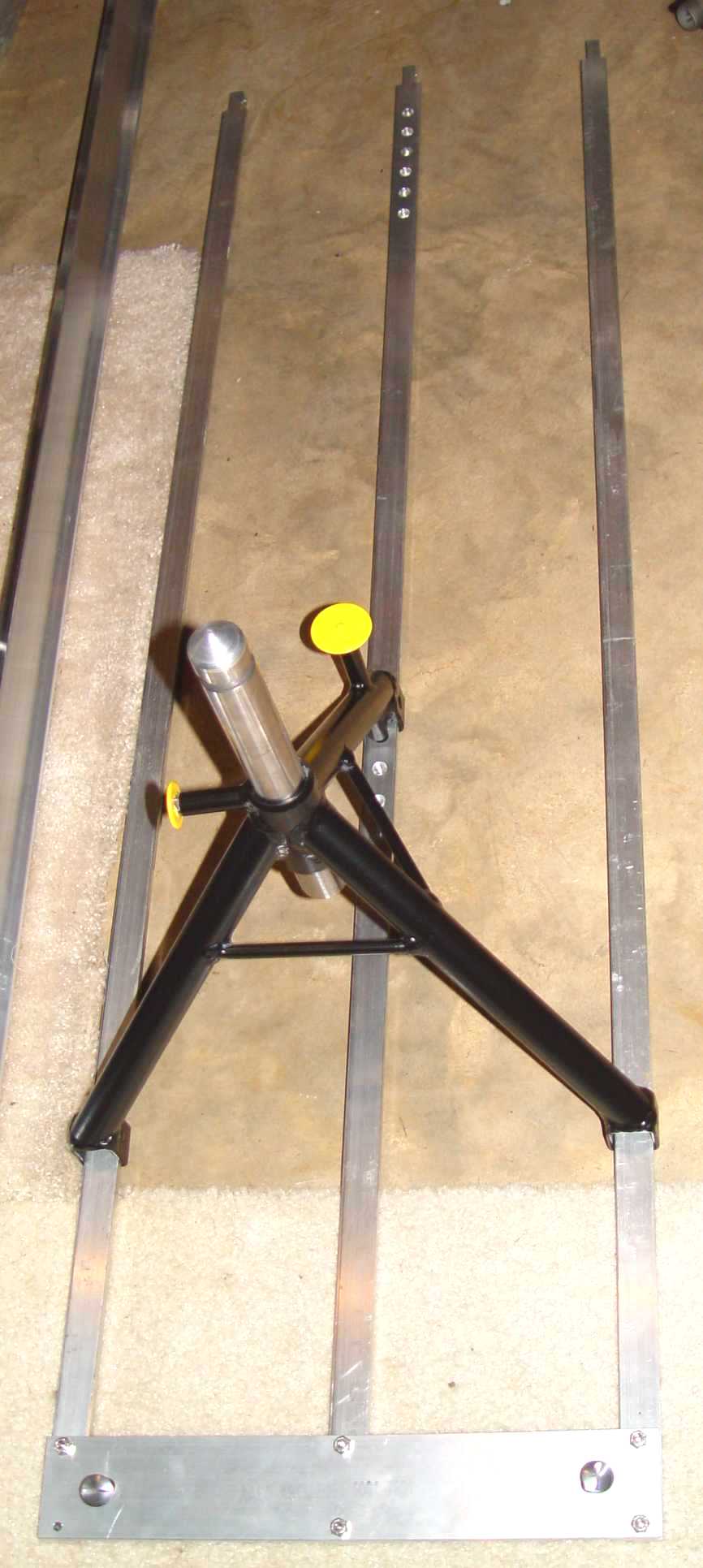
Late B-29 Flight Crew Chair with four foot long rails for Navigator's position
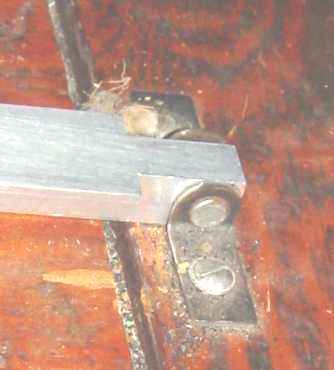
Hinge clip detail
I am indebted to Taigh Ramey of twinbeech.com for the generous loan of a set of navigator's chair rails so that I could document the measurements for posterity.
Below is a drawing for the piece parts of both types of rails:
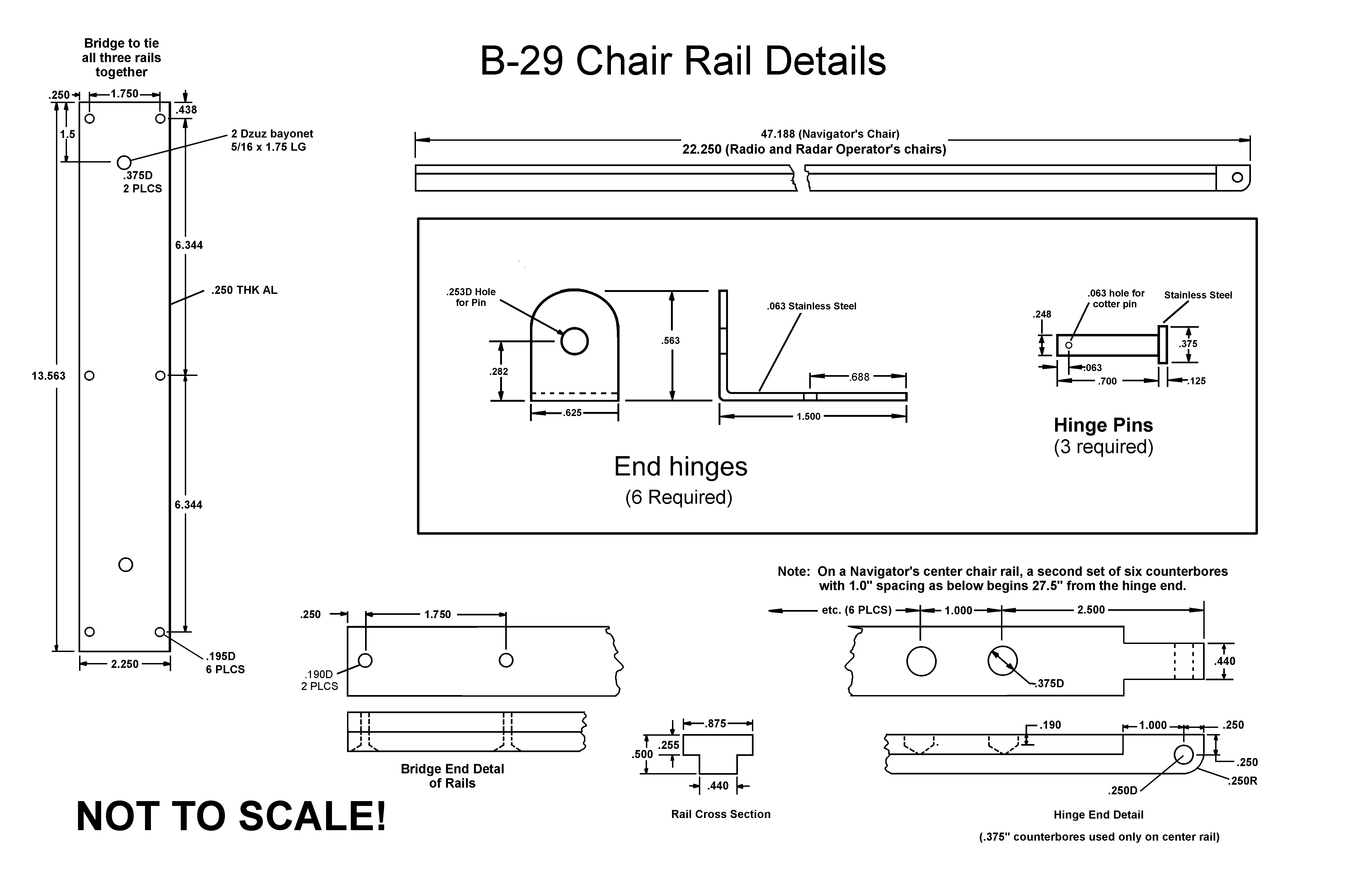
Fabrication drawing for chair mounting rails
One of the most visible manufacturing trademarks I have seen on WWII military aircraft is displayed on the back of these chairs,
in the form of a water decal. Here's a 1945 period black and white photo of the decal as it appears on the chair back:
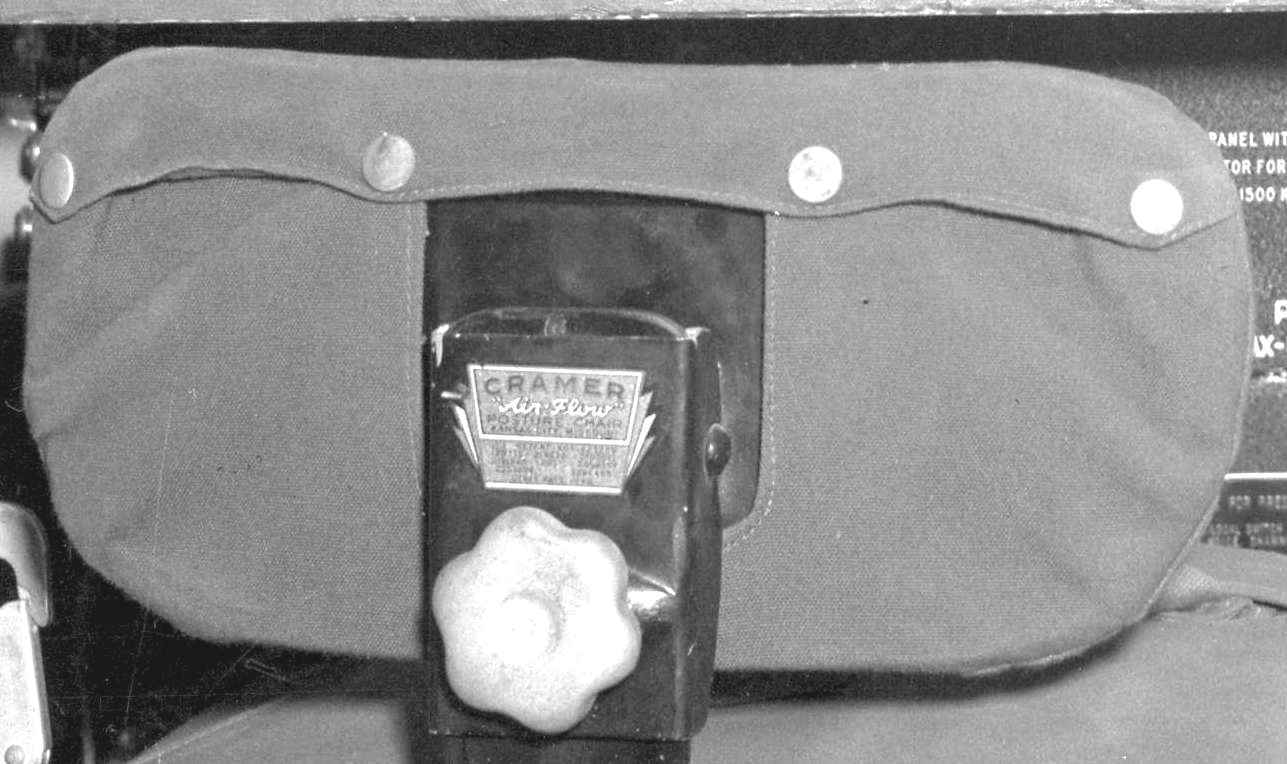
Chair back support with decal.
...and another photo below, showing the detailed colors in the decal. These chair backs were designed more for lumbar support
than lounging,
so you had to sit fairly straight up in the chair. These decals will go on the three chairs mentioned above when I finish their restorations.
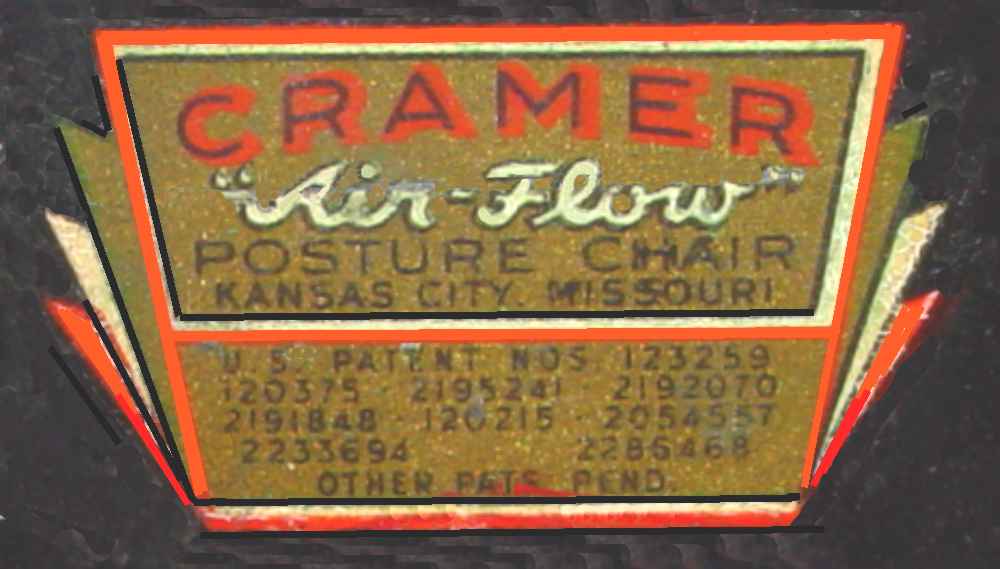
Cramer "Air-Flow" decal.
These three chairs came from ebay auctions back in the 1990s, but as always were missing some hardware.
Luckily there was still an example of each missing piece, enough to make fabrications sketches:

Piece parts often missing from these chairs.
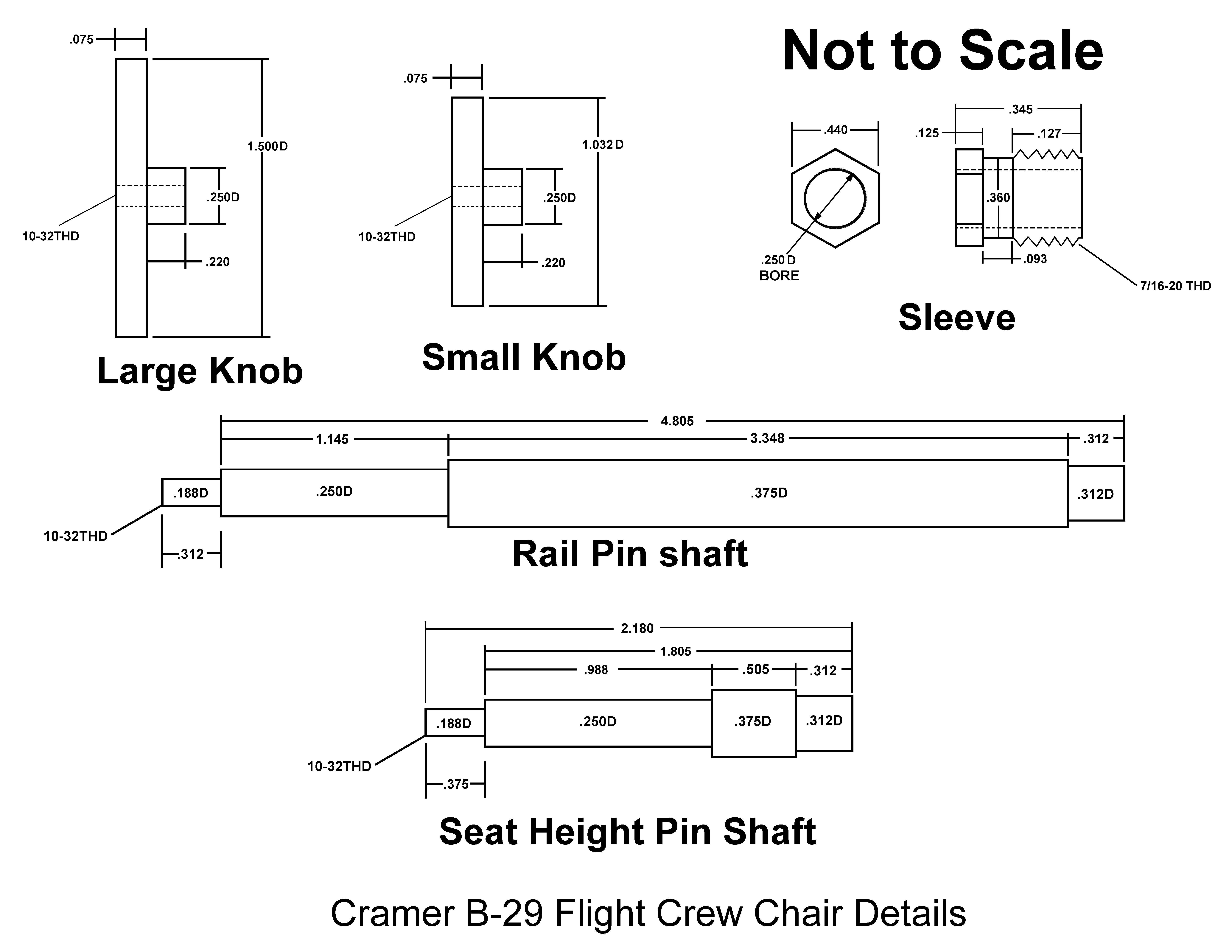
Fabrication sketch for some of the needed parts.
To be augmented with more detail over the winter...
Return to the "peripherals" page









